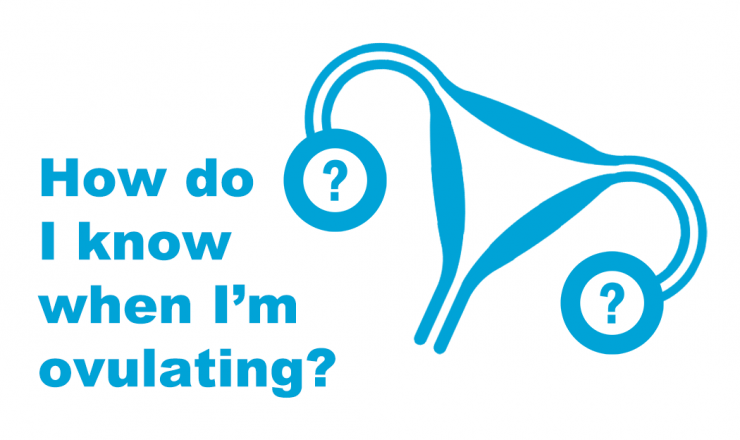

For the third post in our What To Expect series, we’re going over some of the basics of what it’s like to get an IUD.
For whatever reason, you’ve decided that the best birth control option for you is an IUD. That’s really great! So let’s quickly talk about the two types of IUDs that are available – hormonal and copper.
IUD stands for Intra-Uterine Device, and they come in Hormonal and Copper versions. In both cases, IUDs are small T-shaped pieces of plastic that are inserted into a person’s uterus*.
Hormonal IUDs have a band around the middle that contains the hormone progestin. Having an IUD in your uterus changes the chemistry of the uterus and makes it hard for sperm and eggs to survive and meet. The progestin thickens the mucus on your cervix (the opening to your uterus), which makes it harder for sperm to get into your uterus and fertilize an egg. It also thins the lining of your uterus (the endometrium). This makes it harder for a fertilized egg to implant in your uterus and become a pregnancy. For some people, the hormonal IUD may stop eggs from being released from your ovaries (ovulation). Jaydess brand hormonal IUDs can last for 3 years, while the Kyleena and Mirena brands can last for 5 years. Hormonal IUDs are 99.8% effective against pregnancy.
Copper IUDs are wrapped with a small amount of copper wire. Copper interacts with the chemical balance in the uterus and changes it so that it is much harder for sperm to fertilize an egg, or for a sperm and egg to implant into the lining of the uterus. Depending on the brand, the copper IUD can remain in the uterus for 3, 5 or 10 years. Copper IUDs are 99% effective against pregnancy. Copper IUDs can be used as an emergency contraceptive method if inserted up to 7 days after sperm has entered your vagina.
| ****A Little Note About STI Protection**** |
|
You need a prescription from a clinician in order to get an IUD. Sometimes you can get a prescription and have the IUD inserted on the same day, but that may not always be the case. So it can be good to prepare for at least 2 appointments, just in case.
At Planned Parenthood Toronto (PPT), you can get prescriptions for both Hormonal and Copper IUDs. You don’t need to purchase your IUDs from PPT to do the insertion there, but you can. Check out ppt.on.ca/sexual-health for their most recent price sheet.
You cannot purchase an IUD from PPT and get it inserted some place else (as they are not technically a pharmacy).
It is also worth noting that some Hormonal IUDs are covered in Ontario by OHIP+ for residents who are 24 years old or younger. For a full list of which birth control are covered under OHIP+, check out the post on our blog [Link].
For info on what happens when you go to PPT for a birth control prescription, check out our previous post What To Expect: Getting Birth Control Prescriptions [Link].
At PPT, it’s generally recommended that you attend a pre-insertion appointment to discuss your options and to discuss ways you can prepare yourself before the appointment. So again, it might be a good idea to plan for multiple appointments.
Depending on your medical history, clinicians may also do a test for STIs before the insertion appointment. It is totally common for clinicians to want to rule out any risk of STIs or pregnancy before putting in an IUD.
Many clinicians prefer doing IUD insertions while the client is on their period, which again could be a reason why you’ll have to come back later for the procedure. It is not necessary that you get it done during your period, but your period is when your cervix is softest and would make the insertion easier for you and the clinician.
| ****IUDs and Pain**** |
|
If you’re ready for your insertion appointment, you’ll just have to bring your IUD with you to the clinic. IUDs come in large, intimidating boxes, but the actual device is about the same size as a quarter. When you arrive, check in at the front desk, and then grab a seat while you wait for your name to be called.
Once your back in the room with the clinician, they’ll likely check-in and ask how you’re feeling, and hopefully check to see if you have any questions before the procedure. Then they’ll do a quick exam of your vagina, cervix, and uterus. If your cervix isn’t soft enough, you may be offered medicine to help open and/or numb it before the IUD is put in.
To do the insertion, your clinician will likely hold open your vagina using a speculum, and then use a special inserter to put the IUD in through the opening of your cervix and into your uterus. They will then remove the inserter and cut the strings on the end of the IUD.
Again, the process usually takes less than five minutes.
For more context, here’s what an inserter looks like:
And here are some images of what the insertion steps look like:
You can also check out this insertion procedure video to get a better visual understanding of what happens during the procedure (Please Note: IUS is Intra-Uterine System, which is just another word for IUD. Also, the insertion part starts at 1:13.)
Some cramping and pinching is to be expected during and after the insertion, but different people have different reactions to the sensation. Again, it’s sometimes recommended to take a couple of Advil to reduce pain and inflammation, and use a heating pad or hot water bottle for comfort. It’s common to feel really exhausted following this procedure, so be sure to take time to rest and recuperate as you need. Some people try to schedule their insertion appointments at a time when they know they’ll have a couple days off from school or work (like maybe on a Friday).
Your clinician will book you a follow-up appointment for 6 to 8 weeks after the insertion to check that the IUD strings are still in place (a sign that the IUD hasn’t moved), and check to see how you’re feeling.
There may be some irregular bleeding or spotting for a few months after the insertion, and some even have this the entire time on the IUD. You can start using tampons or menstrual cups after 48 hours.
You may also experience some cramping for a few days or weeks after the insertion. This usually goes away with time, as your body gets used to the IUD. If the cramping is really painful and/or not easing up, check in with your clinician.
There is a small chance that your IUD may come out unintentionally. Between 2-10% of people may experience this, which is often just your body rejecting the IUD and pushing it out of your cervix. Expulsion is most likely occur during the first three months that you have the IUD. It can be good to semi-regularly check to make sure the strings are still there and still the same length by feeling with your fingers inside your vagina.
If your IUD does come out, it is recommended that you check in with a clinician as soon as possible. If your IUD was inserted at Planned Parenthood Toronto, you can contact them at 416-961-0113. Other things to look out for and report to a clinician include having fever (potential sign of infection) or if you have unexplained vaginal bleeding that is more serious than the spotting. Again, these things are rare, but it’s good to keep an eye out in case they happen.
If you have questions about this topic, feel free to contact one of our peer educators. [Link]
Last Updated: March 2020
*We know that these aren’t the words everyone uses for their bodies (e.g. trans folks), and support you using the language that feels best for you.

This post talks about secondary amenorrhea, which is what we call it when someone misses three periods in a row.

When it comes to sex and sexual health, how do we feel about risk? What are things we can do to reduce risk of things we don’t want to happen? For the first post in our What Is Risk series we’re talking about Pregnancy Risk!

In this post we go over some of the physical, emotional, and biological signs that people can recognize to better know if and when they might be ovulating. Check it out!